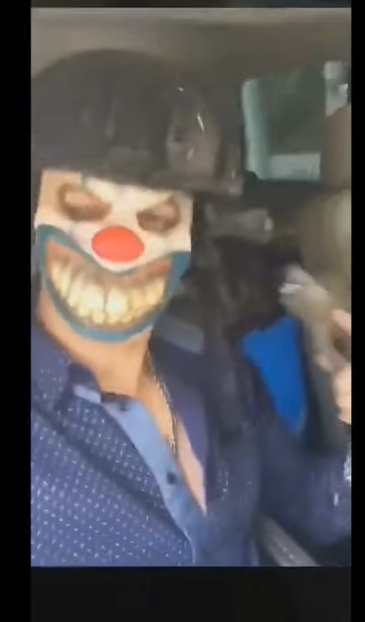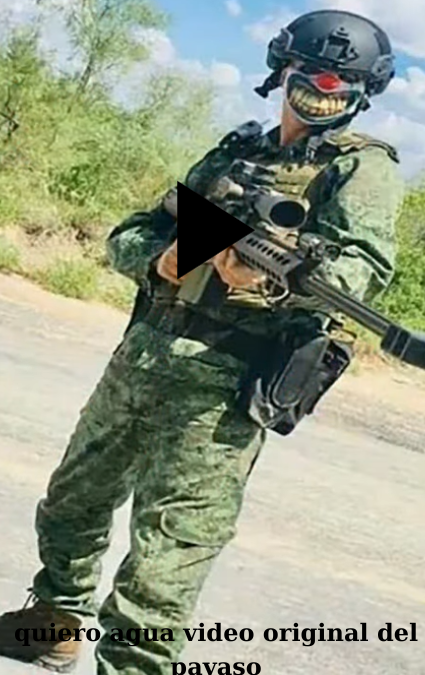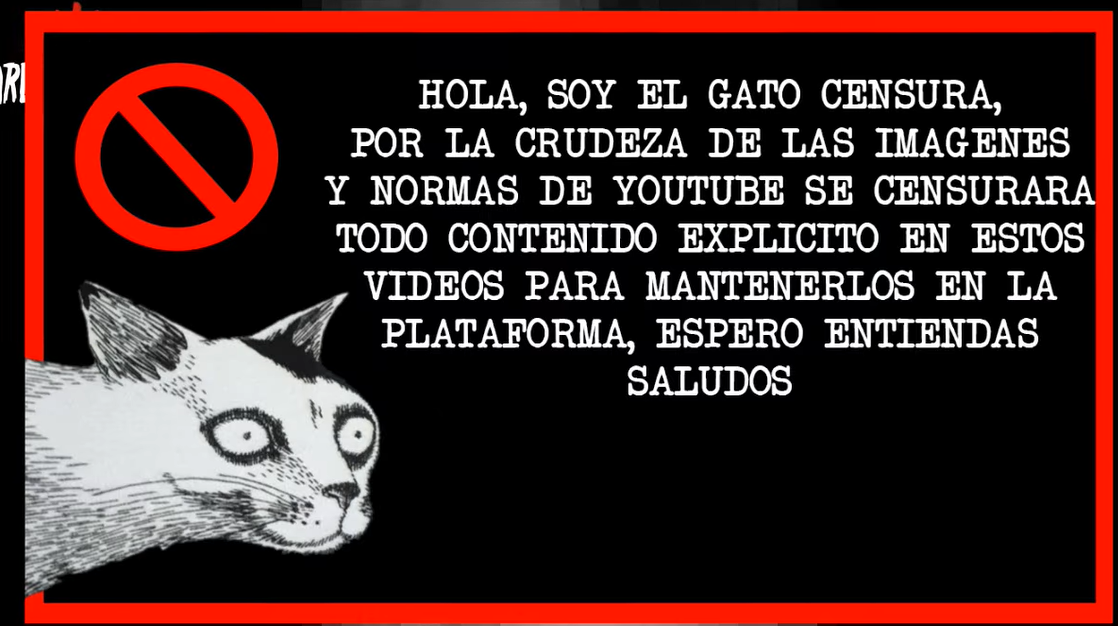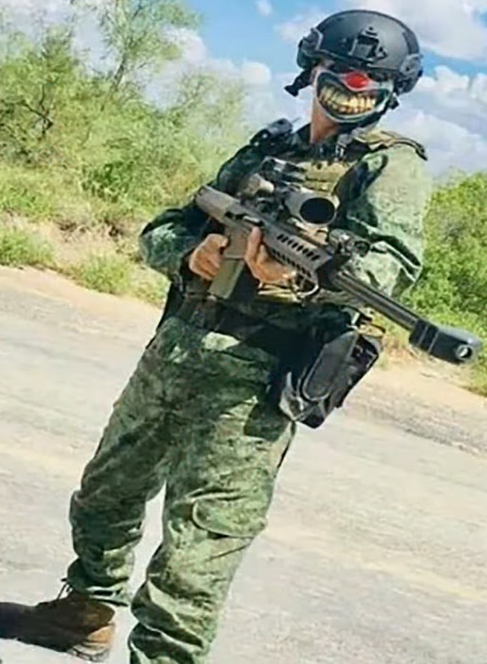En las sombrías profundidades de la internet, un fenómeno aterrador ha emergido con la frase clave “Quiero Agua Video Original del Payaso”. Este video, que ha generado escalofríos y consternación, arroja luz sobre la inimaginable brutalidad perpetrada por el Cártel Jalisco Nueva Generación (CJNG) en México. En nuestro análisis detallado, nos sumergiremos en los detalles perturbadores de este impactante contenido, explorando su origen enigmático, su propagación rápida y la reacción mundial ante la violencia explícita. Prepárense para un viaje al oscuro corazón del CJNG mientras desentrañamos el horror oculto detrás de “Quiero Agua Video Original del Payaso”.

I. The Alarming Event: Quiero Agua Original Gore
The event “Quiero Agua Original Gore” stands as an unsettling and terrifying phenomenon on the Internet. This video has shocked audiences with its horrifying content, exposing the unimaginable brutality of the Jalisco New Generation Cartel (CJNG) in Mexico. The video depicts the suffering of an innocent child subjected to torture and cruel acts before ultimately succumbing to flames after being drenched in gasoline. The brutality captured in this video is not merely a horrifying detail but serves as a symbol of the cartels’ threat and control in Mexico.
Despite the mysterious origin of the video, “Quiero Agua Original Gore” sheds light on the ruthless struggle in Mexico and the utter disregard for human life by the cartels. It has sparked reactions on an international scale, breaking the silence on extreme brutality in Mexico and prompting questions about human rights in the country.
II. The Disturbing Content of the Quiero Agua Gore Video
The content of the “Quiero Agua Original Gore” video is profoundly disturbing and heartbreaking. The video exposes scenes of extreme cruelty perpetrated by the infamous CJNG in Mexico. Viewers witness a child, aged approximately 10 to 12, subjected to unimaginable suffering at the hands of a man allegedly linked to high-ranking positions in the CJNG.
Set against the desolate backdrop of Mexico, the video portrays the child enduring relentless physical abuse, painful burns, and ultimately being forced to ingest gasoline before being burned alive. The video culminates in the shocking image of the charred and lifeless body of the child on the ground. The images of brutality and anguish depicted in this video underscore the extreme measures some cartels are willing to take to instill fear and assert their dominance over territories. Though the exact origin of the “Quiero Agua Original Gore” video remains an enigma, its swift and widespread dissemination on various online platforms is undeniable evidence of its alarming nature.
This unsettling content has polarized viewers, accumulating millions of views and emphasizing the urgency of addressing the extreme brutality it portrays, at a time when the world faces the harsh reality of cartel violence.

III. Origin and Context of Quiero Agua Video Original
The “Quiero Agua Video Original” is a phenomenon that has puzzled researchers and viewers alike due to its mysterious origin and disturbing content. While the exact source of the video has not been identified, it is clear that it has spread widely online, underscoring its unsettling nature.
The video is framed within the broader context of the ongoing struggle in Mexico against cartel influence and violence, with the notorious CJNG taking a prominent role. Mexico has witnessed a prolonged battle against cartels resorting to brutal tactics to maintain control over key territories.
The fact that this video gained such rapid notoriety highlights the urgency of addressing the issue of extreme violence in Mexico. Despite uncertainty about its origin, “Quiero Agua Video Original” has served as a stark reminder of the brutality some cartels are willing to exercise and has shed light on the human rights struggle in the country.

IV. Community Reaction to Quiero Agua Payaso
The “Quiero Agua Payaso” video has elicited a strong and diverse reaction from the community. As the video spread, many people expressed outrage and pain at the shocking and cruel images it presented. The brutality shown in the video moved viewers, evoking feelings of sadness and anger.
However, the video has also inspired empathy and support. Some individuals showed solidarity with the victims and their families, offering their support and sharing messages of compassion for those affected by violence.
Furthermore, the video has spurred calls to action. Both individuals and organizations have joined campaigns and events to raise funds and provide support to victims of violence in Mexico.
It has also served as a powerful tool for spreading messages. Human rights organizations and prominent figures have used this video to convey messages about the situation of violence in Mexico and to pressure the government to take concrete actions in addressing this issue.
Finally, the “Quiero Agua Payaso” video has drawn global media attention, sparking widespread debate on violence and human rights in Mexico. The community’s shock and solidarity have motivated efforts to confront this problem and seek solutions to end this horrifying violence.

V. Conclusions
Importance of the “Quiero Agua” Video in Revealing Extreme Brutality in Mexico and Internationally
The “Quiero Agua” video has played a crucial role in shedding light on the unimaginable brutality of cartels in Mexico. It has highlighted the issue of violence and human rights in this country and provided an opportunity to examine a heartbreaking reality that many had overlooked. From this horror, we must learn that addressing violence requires collaboration and improvement in the system like never before.
Reflection of the Video on the Complete Disregard for Human Life by Cartels
The “Quiero Agua” video has highlighted the complete disregard and brutality against human life perpetrated by cartels. It has been a terrifying declaration of cruelty and lack of respect for life. This reflection has raised social awareness and alerted to this concerning situation not only in Mexico but worldwide. The video has spurred efforts to combat violence and protect human rights, especially in the complex scenario of the fight against cartels.
